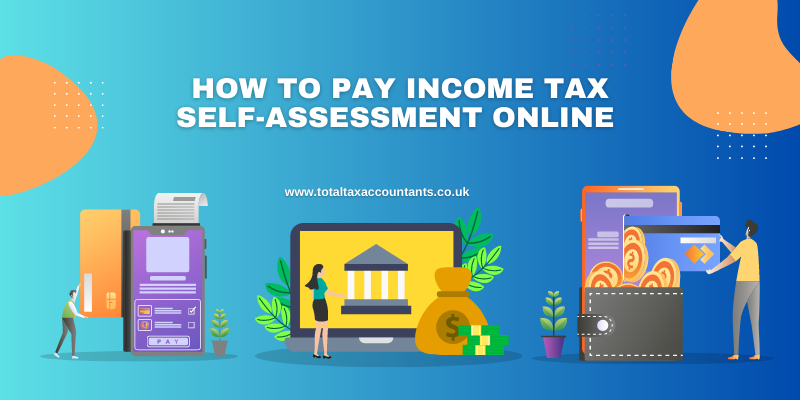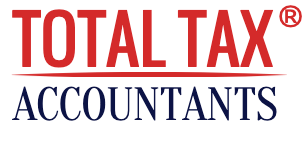
How to Pay Income Tax Self-Assessment Online – A Step By Step Guide
Paying income tax self-assessment online is a crucial task for many individuals and businesses in the UK. With the Self-Assessment deadline of 31 January, it’s essential to understand the process and the various methods available for payment. This guide provides a step-by-step overview of how to pay your Self-Assessment tax bill online.
Understanding the Need for Self-Assessment
Self-assessment is required for individuals and businesses with income not deducted at source and above a certain level. If you were self-employed, a partner in a business partnership, or a director of a limited company whose income was not taxed at source, you must file a tax return. Even those with primary income from wages or pension may need to send a return if they have other untaxed income.
Registering and Filing a Tax Return Online
- Register for an HMRC Online Account: If you haven’t completed a tax return online before, you must register for an HMRC online account. An activation code will be posted to you, so do this well in advance.
- Gather Necessary Information: You’ll need your UTR, National Insurance number, employer reference, P60, P11D, P45, payslips, and possibly other documents.
- Complete the Online Form: Fill in personal details, income sources, bank or building society interest, pensions, share dividends, benefits, student loans, pension contributions, gifts, charitable donations, child benefit, and marriage allowances.
- Submit the Form: Double-check everything before you click submit. Save a copy of your final return and print a copy of the receipt.
Ways to Pay Your Tax
You can pay your Self-Assessment bill using Faster Payments, CHAPS, or Bacs. Here are the account details:
- For HMRC Cumbernauld: Sort code 08 32 10, Account number 12001039
- For HMRC Shipley: Sort code 08 32 10, Account number 12001020
- For Overseas Accounts: BIC BARCGB22, IBAN GB62BARC20114770297690 (Cumbernauld), GB03BARC20114783977692 (Shipley)
You’ll need to use your 11-character payment reference, which is your 10-digit Unique Taxpayer Reference (UTR) followed by the letter ‘K’.
Payment Timelines
- Faster Payments: Usually reach HMRC on the same or next day.
- CHAPS Payments: Reach HMRC the same working day if paid within your bank’s processing times.
- Bacs Payments: Usually take 3 working days.
- Overseas Payments: May take longer.
Allowable Expenses
If you are self-employed, you can deduct allowable expenses such as office costs, uniforms, staff costs, financial costs, professional fees, business premises costs, and advertising or marketing.
Penalties and Appeals
Expect a fine of £100 if your tax return is up to three months late or if you pay your tax bill late. More complex fines apply beyond three months.
Using an Accountant
Many business owners find that using an accountant pays for itself quickly. They can help clients understand income tax rules, ensure correct claiming for all allowable expenses, avoid errors, and handle any disputes with HMRC.
Paying income tax self-assessment online is a streamlined process that can be done with proper preparation and understanding. By following this guide, individuals and businesses can ensure they meet the requirements and deadlines, avoiding unnecessary penalties and stress. Whether doing it yourself or with the help of an accountant, the key to a successful filing is planning and attention to detail.
In-Depth Analysis of Different Options to Pay Income Tax Self-Assessment Online
Paying income tax self-assessment online is a responsibility that many UK taxpayers must fulfil. With the advancement of technology, several convenient options have been introduced to make this process more accessible and efficient. This article explores the various methods available for paying income tax self-assessment online in the UK.
Online or Telephone Banking (Faster Payments)
Overview
Faster Payments is a service that allows taxpayers to make payments to HMRC directly from their bank account. It’s a quick and secure method.
How to Use
- Sort Code and Account Number: Use the appropriate sort code and account number provided by HMRC.
- Reference: Include your 11-character payment reference.
- Timing: Payments usually reach HMRC on the same or next day.
CHAPS Payments
Overview
CHAPS (Clearing House Automated Payment System) is a same-day payment method suitable for large transactions.
How to Use
- Sort Code and Account Number: Use the HMRC details for CHAPS payments.
- Reference: Include your 11-character payment reference.
- Timing: Payments reach HMRC the same working day if paid within your bank’s processing times.
Bacs Payments
Overview
Bacs (Bankers’ Automated Clearing Services) is a three-day payment method commonly used for regular payments.
How to Use
- Sort Code and Account Number: Use the HMRC details for Bacs payments.
- Reference: Include your 11-character payment reference.
- Timing: Payments usually take 3 working days.
Direct Debit
Overview
Direct Debit allows HMRC to collect the amount directly from your bank account. It’s convenient for regular payments.
How to Use
- Set Up: You must set up a Direct Debit with HMRC in advance.
- Timing: The amount will be automatically deducted on the agreed date.
Debit or Corporate Credit Card Online
Overview
You can pay your self-assessment tax bill using a debit or corporate credit card online.
How to Use
- Online Portal: Use the HMRC online portal to make the payment.
- Fees: There may be a non-refundable fee for credit card payments.
Overseas Payments
Overview
For those outside the UK, international payment options are available.
How to Use
- BIC and IBAN: Use the appropriate BIC and IBAN provided by HMRC.
- Reference: Include your 11-character payment reference.
- Timing: Overseas payments may take longer.
HMRC’s Budget Payment Plan
Overview
HMRC’s budget payment plan allows you to pay more regularly throughout the year, such as weekly or monthly.
How to Use
- Eligibility: Your previous payments must be up to date, and you must be paying in advance.
- Set Up: Contact HMRC to set up the plan.
Paying income tax self-assessment online in the UK has never been more accessible, with various options catering to different needs and preferences. From faster payments through online banking to the convenience of Direct Debit, taxpayers can choose the method that best suits their circumstances.
Whether you’re a business owner, self-employed individual, or someone with other untaxed income, understanding these payment options ensures a smooth and timely payment process. Always remember to include the correct reference and adhere to the timelines to avoid any unnecessary complications or penalties. By embracing these online payment methods, you can fulfil your tax obligations with ease and confidence.
Comparison of Different Options to Pay Income Tax Self-Assessment Online
1. Online or Telephone Banking (Faster Payments)
- Speed: Same or next day
- Convenience: Direct from bank account
- Fees: None
2. CHAPS Payments
- Speed: Same working day
- Convenience: Suitable for large transactions
- Fees: May incur bank charges
3. Bacs Payments
- Speed: 3 working days
- Convenience: Common for regular payments
- Fees: None
4. Direct Debit
- Speed: Agreed date
- Convenience: Automatic deductions
- Fees: None
5. Debit or Corporate Credit Card Online
- Speed: Immediate
- Convenience: Online portal
- Fees: Non-refundable fee for credit card payments
6. Overseas Payments
- Speed: May take longer
- Convenience: For non-UK residents
- Fees: May incur bank charges
7. HMRC’s Budget Payment Plan
- Speed: Regular intervals
- Convenience: Weekly or monthly payments
- Fees: None
Suggested Best Option: Online or Telephone Banking (Faster Payments)
Why It’s the Best
- Speed: Faster Payments ensures that the payment reaches HMRC on the same or next day, making it one of the quickest options.
- Accessibility: Most UK bank accounts are equipped to handle Faster Payments, making it widely accessible to taxpayers.
- No Additional Fees: Unlike some other methods, Faster Payments does not incur additional fees.
- Convenience: The ability to pay directly from your bank account without setting up additional arrangements adds to the convenience.
- Flexibility: Suitable for both large and small payments, it offers flexibility to suit various taxpayer needs.
While the best payment method may vary depending on individual circumstances, Faster Payments stands out as a versatile and efficient option for paying income tax self-assessment online in the UK. Its combination of speed, accessibility, lack of additional fees, convenience, and flexibility makes it an attractive choice for a wide range of taxpayers.
However, it’s essential to consider personal preferences, the size of the payment, and specific needs when choosing the best method. For those who prefer regular deductions, Direct Debit or HMRC’s Budget Payment Plan may be more suitable. For large transactions, CHAPS might be the preferred option. Understanding the unique features of each method will enable taxpayers to select the one that best aligns with their requirements.
Top of Form


